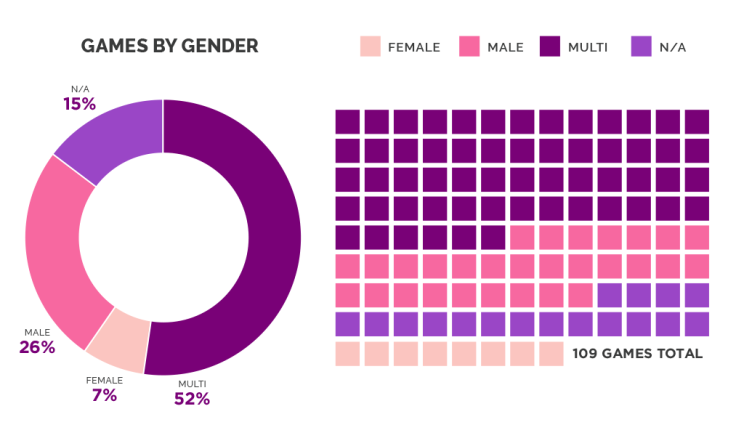Video games where players commit acts of violence while playing as a male protagonist may still be the most popular, but this year showed a larger rise in female characters getting the opportunity to take center stage. However, even if the character is a woman, violence is more present than ever before.
Feminist Frequency has created gender breakdowns of the games seen during the major press conferences at E3 over the past few years, and the findings for 2017 are here. This information is based off of 109 games seen from the press conferences held by Ubisoft, Microsoft, Sony, Square Enix and Nintendo and other companies. The big news is over half of the games don’t feature a male as an exclusive or primary main character. Most of these games allow players to pick between a male or female, or allow players to create a custom character.

That being said, over a quarter of all games are still forcing players into a male role. Compare that to only seven percent of games where players must play as a female. In fact, games like the new Ori or Rocket League all fall into the “N/A” category, which is still more than double the percentage of games where players are female.
This may not seem like much progress, but compared to 2016, it’s huge. Last year, men starred in 41 percent of the 59 games at E3, with the mixed/chosen/created character option coming in at 49 percent. Women leads could only be found in three percent of games that year.

In terms of violent video games, 2017 was a bit of a step backwards. 83 percent of games in 2017 featured violence of some kind. Compared to 2016’s 81 percent, there’s a little more violence in the games coming out now compared to then.
The article does make it clear that this isn’t to condemn violent games or to suggest all games with violence are inherently bad. It also makes sure to clarify that not all violence is created equal, specifically mentioning how games like Tunic still feature violence, even though it’s nowhere near as graphic or visceral as say, Call of Duty or God of War.
The reason for this graph, according to author and managing editor of Feminist Frequency Carolyn Petit, is to “call attention to how prevalent violence remains in games of all kinds, because when violence is so consistently seen as a core component of game design, it limits our sense of what games are capable of and what kinds of stories they can tell.” This is true, especially when compared to the movie industry. Could you imagine if studios only created action and war movies? There would be no room for musicals, dramas, romantic comedies and more. More diverse games is always a good thing.
So what do you think? Are you excited to see more diverse characters in video games this year? Does the amount of violent video games bother you, or do you not mind? Let us know your thoughts in the comments section below.


















